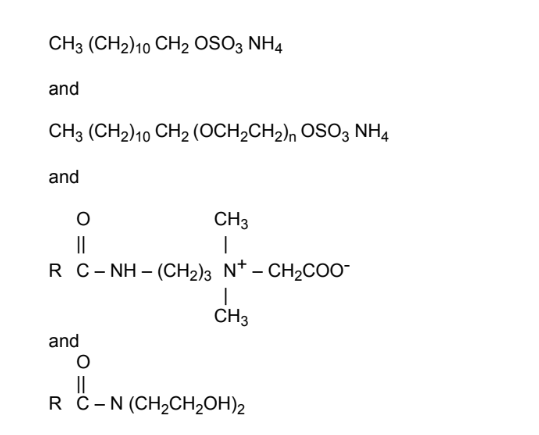Enhanced TDS
Identification & Functionality
- INCI Name
- Tilley Product Number
- Cosmetic Ingredients Functions
- Technologies
- Product Families
- Chemical Structure

Features & Benefits
Applications & Uses
- Markets
- Applications
- Application Format
- Hair Care Applications
- Personal Hygiene Applications
- Product Applications
- STEPANOL AEG is a concentrated surfactant blend for use in shampoos, liquid handsoaps, and bath products.
- STEPANOL AEG exhibits excellent foam and viscosity characteristics. It offers ease of handling and simple mixing and dilution attributes.
Properties
- Physical Form
Regulatory & Compliance
- Certifications & Compliance
- Chemical Inventories
Safety & Health
- Toxicity Information
- The toxicology of major components that make up STEPANOL AEG blend (Ammonium Lauryl Sulfate and Ammonium Laureth Sulfate) is well known.
- Ammonium Lauryl Sulfate is slightly toxic orally (LD50 is 3-5.5 g/kg) and causes moderate to severe eye and severe skin irritation at 10% active.
- Ammonium Laureth Sulfate is slightly toxic orally (LD50 > 5g/kg) and causes mild eye irritation at 7.5% test solution and no skin irritation at 0.07 and 0.14% test solution.
Packaging & Availability
- Packaging Information
STEPANOL AEG is available in 55 gallon drums (net weight 450 lb/204 kg).
Storage & Handling
- Storage Condition
- Normal safety precautions (i.e., use of gloves and safety goggles) should be employed when handling STEPANOL AEG.
- Contact with the eyes and prolonged contact with the skin should be avoided. Wash thoroughly after handling material.
- It is recommended that STEPANOL AEG be stored in sealed containers and kept at temperatures between 40°F (4°C) and 120°F (49°C).
- Avoid overheating or freezing. If material is frozen, mild heat and agitation are recommended to ensure the material is homogeneous before use.
